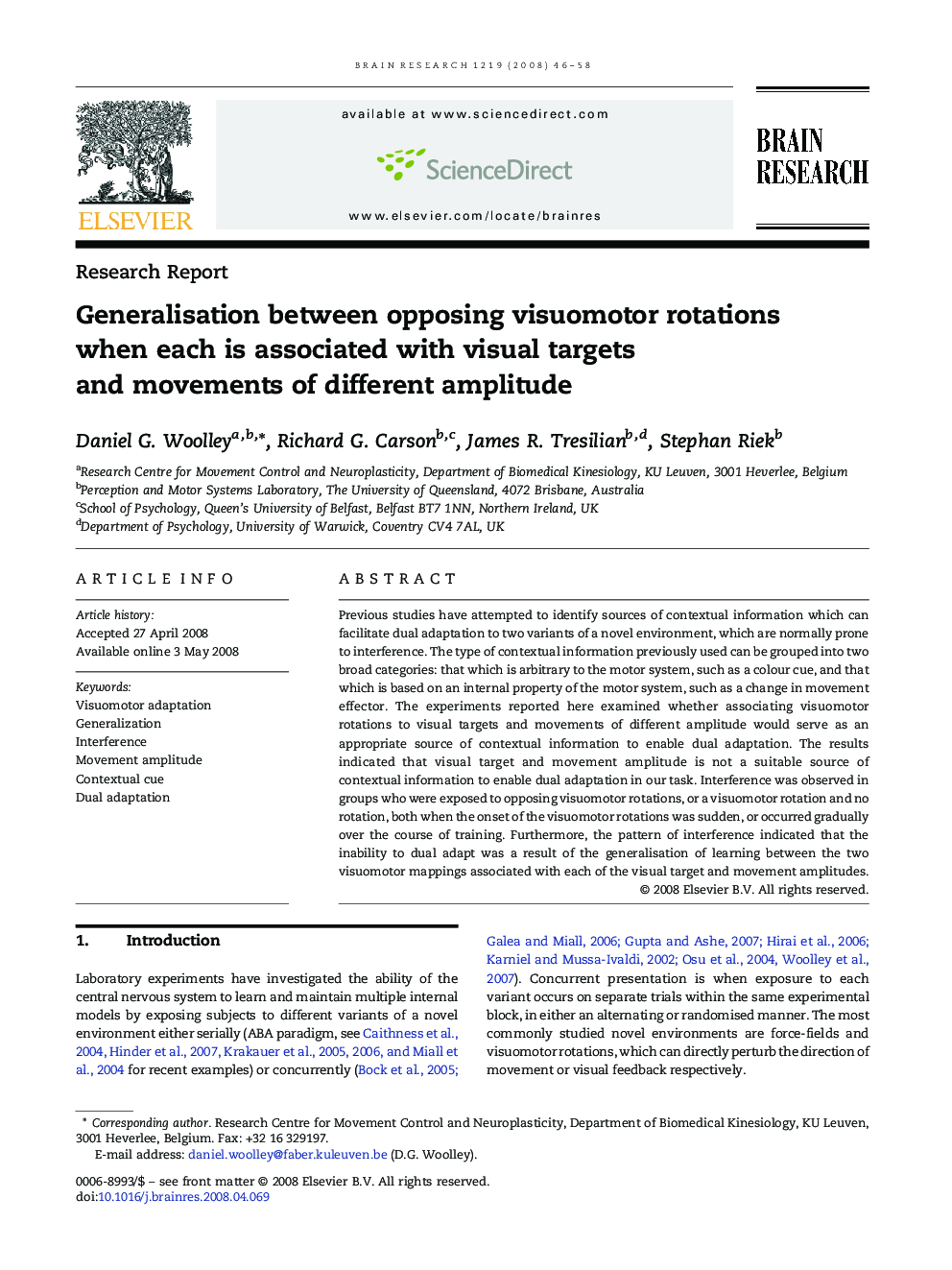| Article ID | Journal | Published Year | Pages | File Type |
|---|---|---|---|---|
| 4329558 | Brain Research | 2008 | 13 Pages |
Previous studies have attempted to identify sources of contextual information which can facilitate dual adaptation to two variants of a novel environment, which are normally prone to interference. The type of contextual information previously used can be grouped into two broad categories: that which is arbitrary to the motor system, such as a colour cue, and that which is based on an internal property of the motor system, such as a change in movement effector. The experiments reported here examined whether associating visuomotor rotations to visual targets and movements of different amplitude would serve as an appropriate source of contextual information to enable dual adaptation. The results indicated that visual target and movement amplitude is not a suitable source of contextual information to enable dual adaptation in our task. Interference was observed in groups who were exposed to opposing visuomotor rotations, or a visuomotor rotation and no rotation, both when the onset of the visuomotor rotations was sudden, or occurred gradually over the course of training. Furthermore, the pattern of interference indicated that the inability to dual adapt was a result of the generalisation of learning between the two visuomotor mappings associated with each of the visual target and movement amplitudes.
